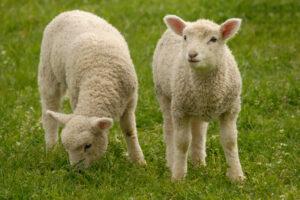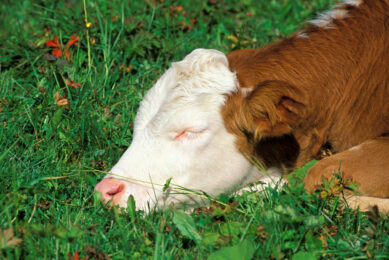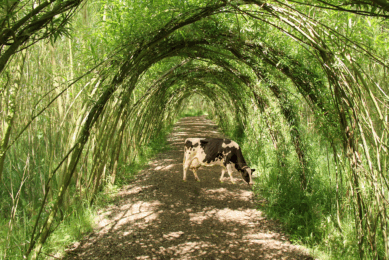Willow in lambs’ diets: Growth, health and environmental benefits

Innovative Farmers and the Soil Association have launched a new agroforestry network specifically focusing on the benefits of feeding willow to lambs. The learning network is meeting quarterly to link farmers together to help share their knowledge and experience on the topic.
Cobalt deficiency
Many weaned lambs suffer from cobalt deficiency which can impact on growth rates, particularly during dry summers. Cobalt is used to make vitamin B12 which supports lamb growth and deficiency can cause significant production losses even at a sub clinical level due to poor growth rates.
Feeding willow could cut costs

Grass pasture rarely meets the daily requirement for lambs throughout the season and can be lowest at this time of year when weaned lambs should be at maximum growth rates. Cobalt and/or vitamin B12 are therefore often supplemented with boluses. However, administering boluses and drenches adds costs both in terms of product and time to administer and free access supplements cannot guarantee consistent intakes in all animals.
Studies have found that feeding lambs willow can significantly reduce this deficiency without the need for additional treatment such as boluses. The leaves have been shown to have high concentrations of cobalt and lambs seem to find willow leaves highly palatable.
On-farm trial
One farmer that has been involved in this work has been Tom Fairfax, a sheep producer in the Northeast of England. Tom has been keeping his lambs together for the majority of the time but once a week the group are being weight and a treatment group split from the main flock. The same lambs will be in the treatment group throughout the trial. This treatment group will be kept separate for a day and given access to willow leaves for feed. They will then be returned to the rest of the flock for the rest of the week. Growth rates are being recorded throughout the trial and at the end, when the lambs are finished, blood tests will be taken to establish cobalt levels in the 2 groups.
Match grazed grass
Dr Nigel Kendall, lecturer in nutrition at the University of Nottingham, said willow leaves could match grazed grass, in terms of the supply of energy and protein, as well as containing valuable micronutrients.
Willow leaves have high concentrations of cobalt and zine and these nutrients can help promote lamb growth rates, especially during a dry summer. The uptake of combat in grassland is reduced during periods of low rainfall and lambs only require a small quantity of leaves, to supplement cobalt deficient grazing.
Dr Nigel Kendall, lecturer in nutrition at the University of Nottingham
Reduction in methane & parasitic infections
A study in 2019 by the UK Government’s Animal and Plant Health Agency (APHA) found that almost 10% of tested lamb carcases showed cobalt deficiencies.
And research at the University of Belfast has shown that feeding willow leaves to sheep may also cut methane emissions. Willow is also known to have an anthelmintic effect, which could reduce the use of worming product treatments.











